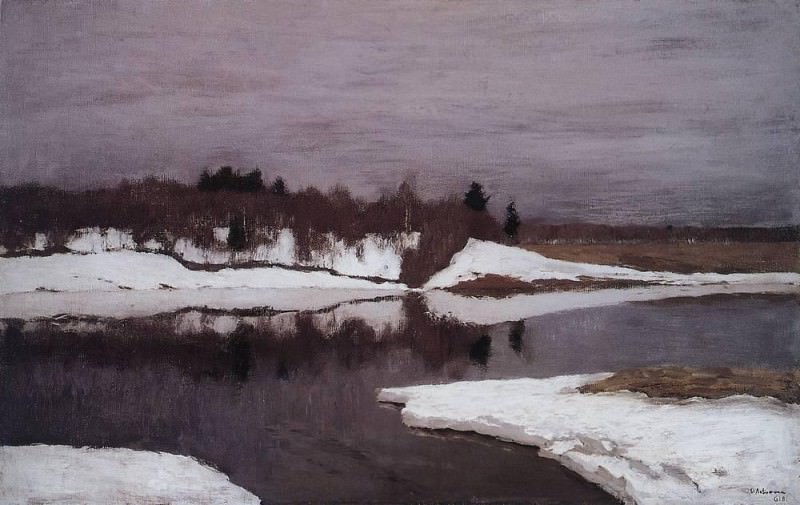Early spring. 1898 Isaac Ilyich Levitan (1860-1900)
Isaac Ilyich Levitan – Early spring. 1898
Edit attribution
Download full size: 1000×631 px (0,1 Mb)
Painter: Isaac Ilyich Levitan
Location: State Russian Museum, St. Petersburg (Государственный Русский Музей).
The paintings of the great artist Levitan have always been very vividly and vividly received by the public. The approval of the painting, titled Early Spring, has not gone unnoticed. This work vividly expressed a special mood of emotion, which is most susceptible to Russian people, with its perception of the world and a subtle sense of nature. At the same time, it is worth noting that this picture is executed in a very high artistic quality. Some critics even noted this modern painting, the highest level in the world. The painting is incomparably an act of unique penetration and sense of nature.
Description of Isaac Levitan’s painting Early Spring
The paintings of the great artist Levitan have always been very vividly and vividly received by the public. The approval of the painting, titled Early Spring, has not gone unnoticed.
This work vividly expressed a special mood of emotion, which is most susceptible to Russian people, with its perception of the world and a subtle sense of nature. At the same time, it is worth noting that this picture is executed in a very high artistic quality.
Some critics even noted this modern painting, the highest level in the world.
The painting is incomparably an act of unique penetration and sense of nature. As for technical execution, there is no doubt that Levitan is one of the greatest representatives of technical perfection.
In this landscape the master not only conveys the beauty of his native and familiar places, but also generalizes all the beauties of Russian nature. This is largely due directly to the mood of the master himself. In confirmation of this we can even give an example, when the artist was in Yalta for treatment, but it did not bring him relief, as all the time Levitan longed for his native places.
Early spring was captured mainly because the artist tried to capture every moment of nature, in its various states. Due to the fact that Levitan very much disliked, this inevitably approaching eternity of existence, on his paintings, very well get to discern and feel the momentary experience of nature and the artist at the time of writing a picture. The snow begins to give way in the struggle for the fertile Slavic lands, but still most of the land is covered by it.
In the river can be seen reflections of trees that have not yet had time to acquire foliage. The painting evokes a kind of sadness because of the dampness and cold that it depicts, but at the same time the approaching spring cannot help but rejoice.
Кому понравилось
Пожалуйста, подождите
На эту операцию может потребоваться несколько секунд.
Информация появится в новом окне,
если открытие новых окон не запрещено в настройках вашего браузера.
You need to login
Для работы с коллекциями – пожалуйста, войдите в аккаунт (open in new window).




















COMMENTS: 1 Ответы
Барыня-речка, сударыня-речка,
На сосне грачи кричат.
Просыпайтесь, речка, сударыня-речка,
Хватит подо льдом скучать.
Барыня-речка, сударыня-речка,
Не проснулись Вы одна.
Просыпайтесь, речка, сударыня-речка,
На дворе у нас весна.
You cannot comment Why?
The painting depicts a desolate, overcast landscape in early spring. A large body of water, likely a river or lake, fills the foreground and midground, its surface reflecting the muted tones of the sky and the surrounding terrain. Patches of snow and ice cling to the banks, indicating the transition from winter to a warmer season. The shoreline is lined with bare trees and brush, their dark, skeletal forms stark against the snow-covered ground. The sky is a heavy, oppressive gray, with subtle variations in shade suggesting clouds. The overall impression is one of quiet stillness and the subtle awakening of nature after a long period of dormancy.
The subtexts of this painting can be interpreted in several ways: